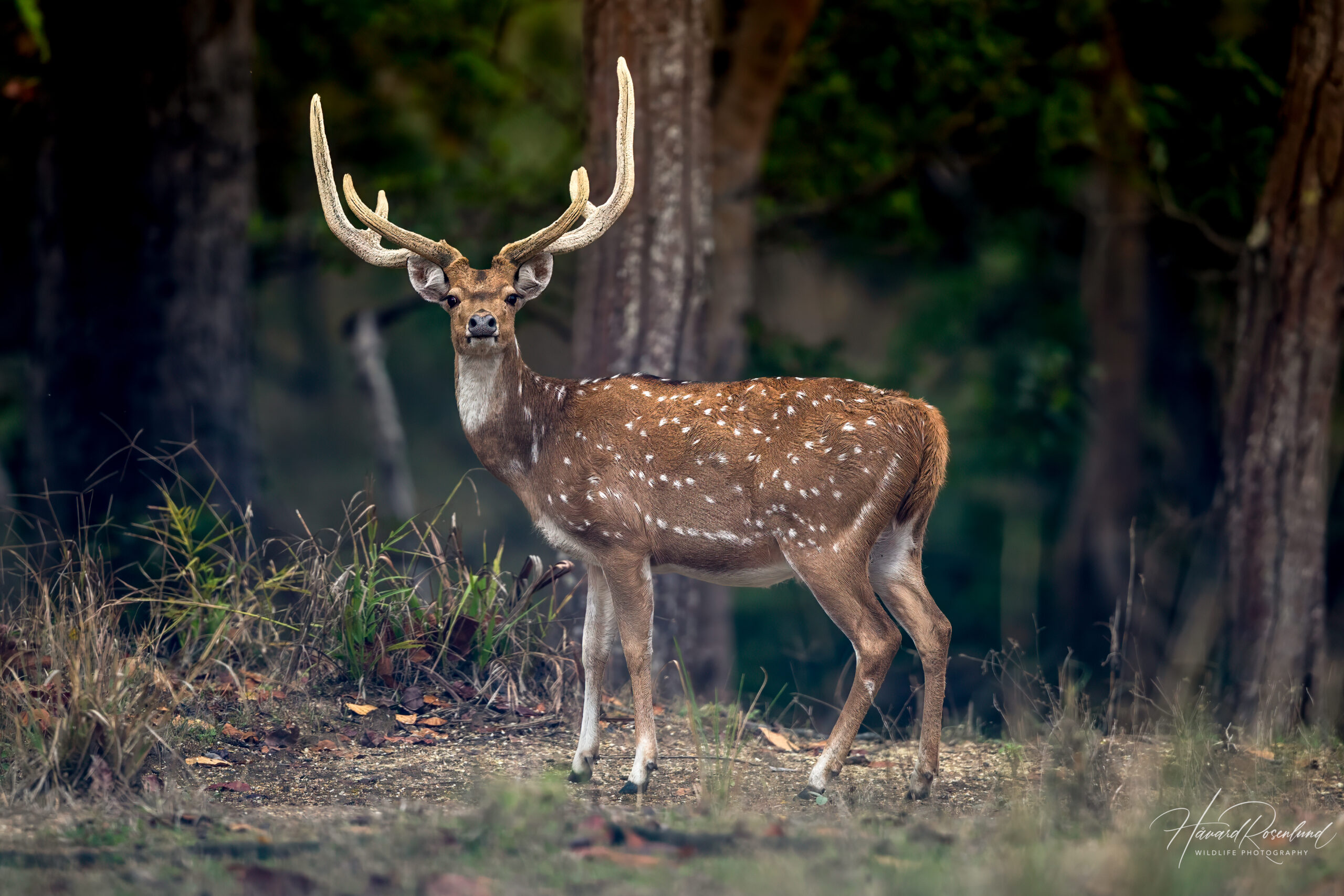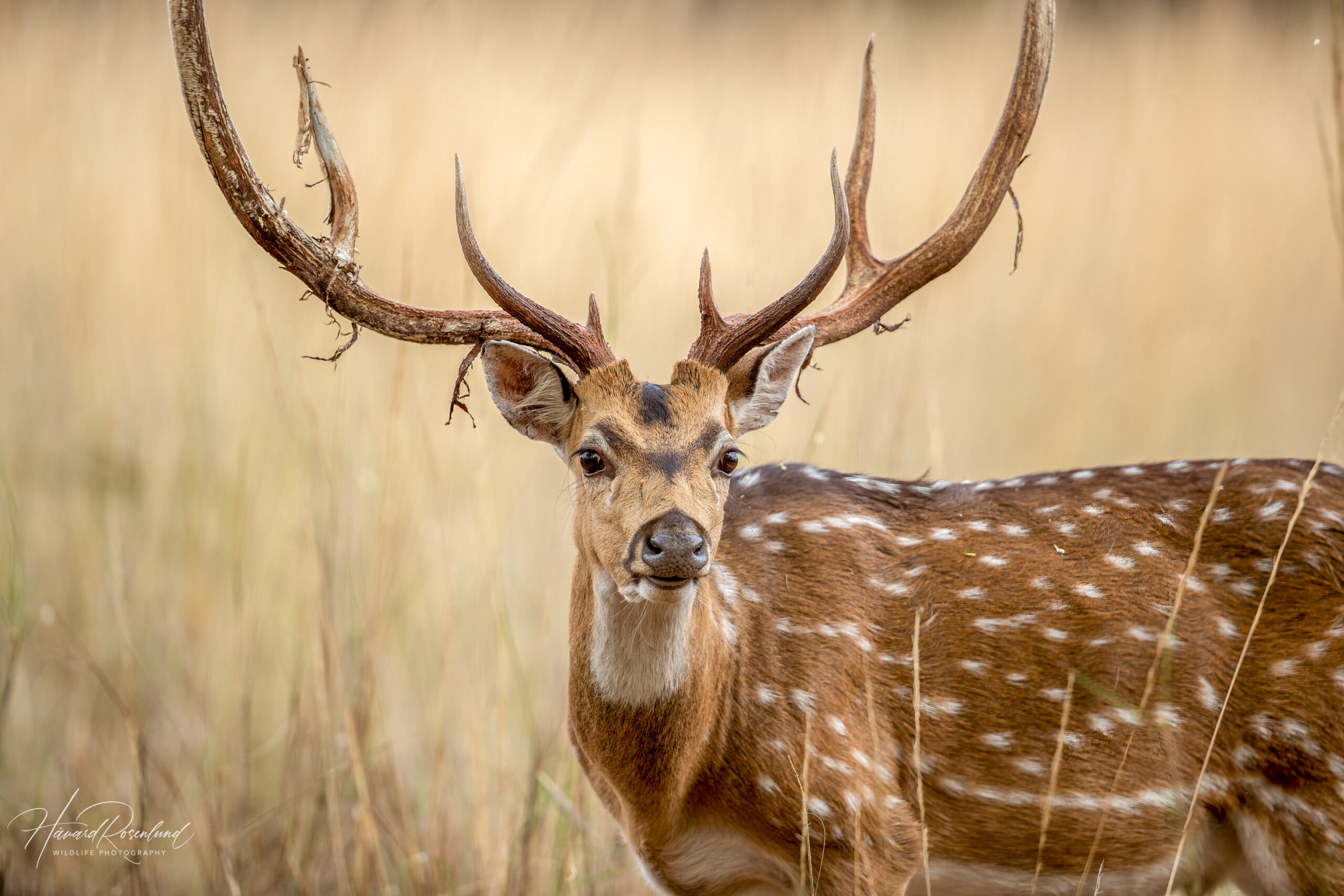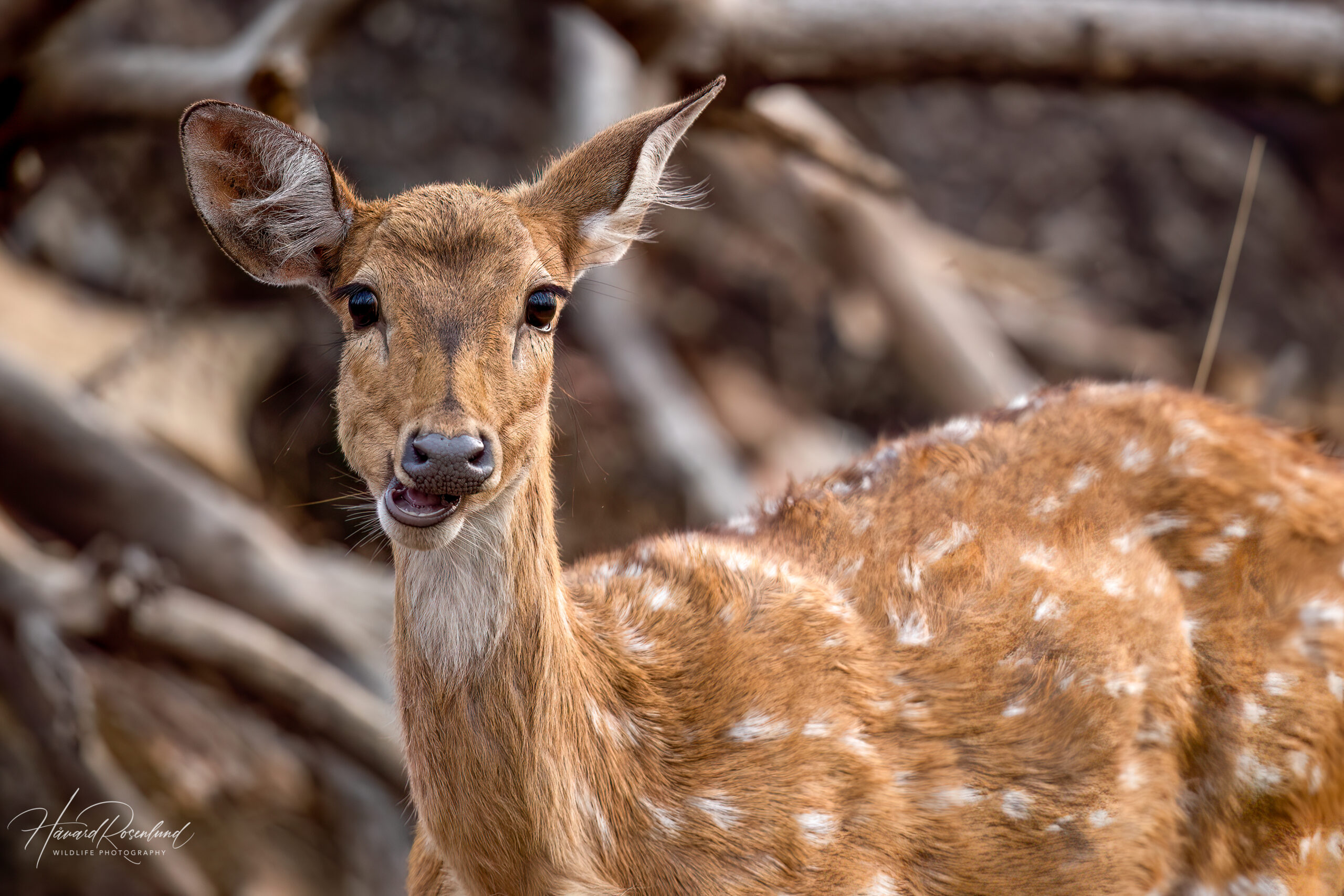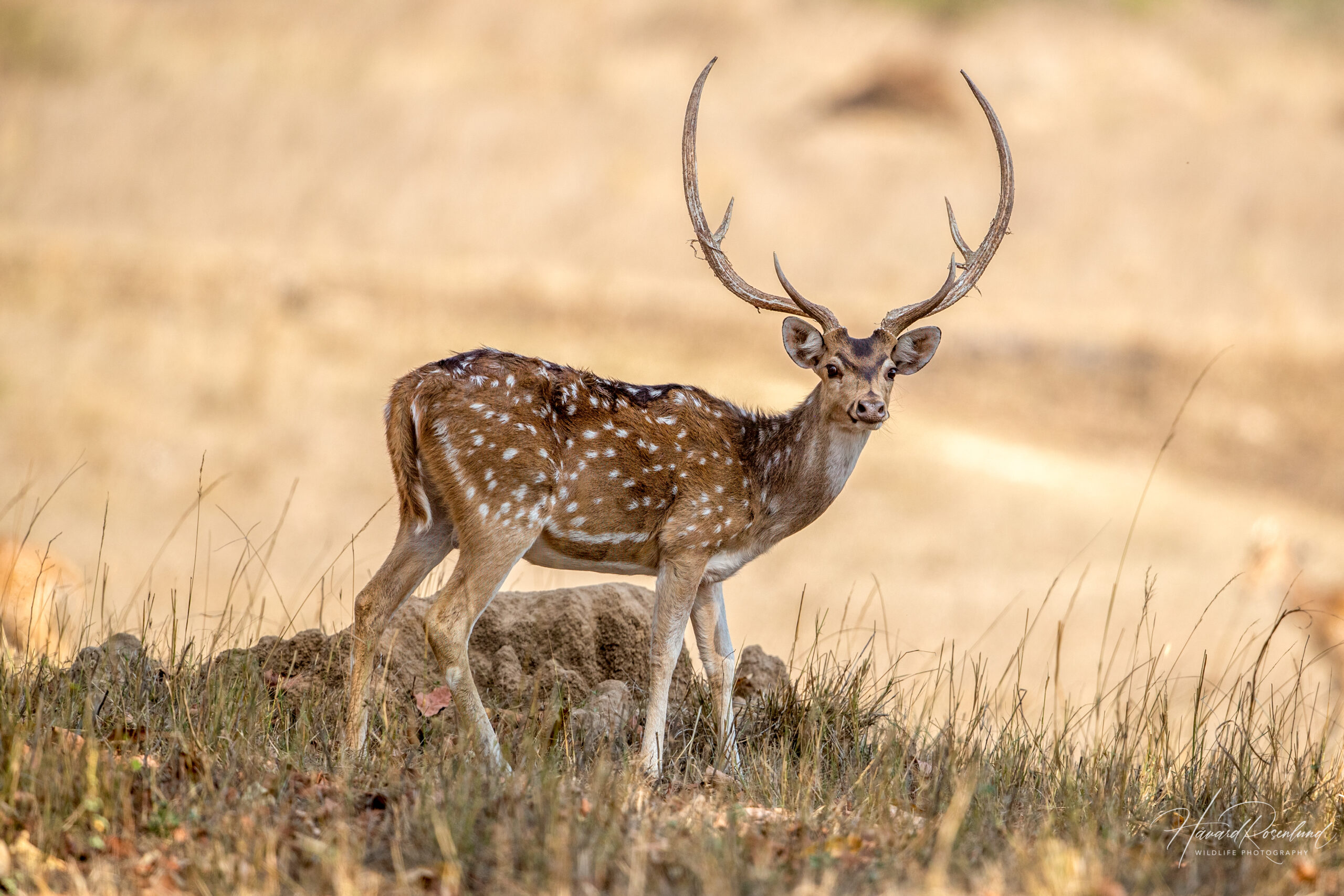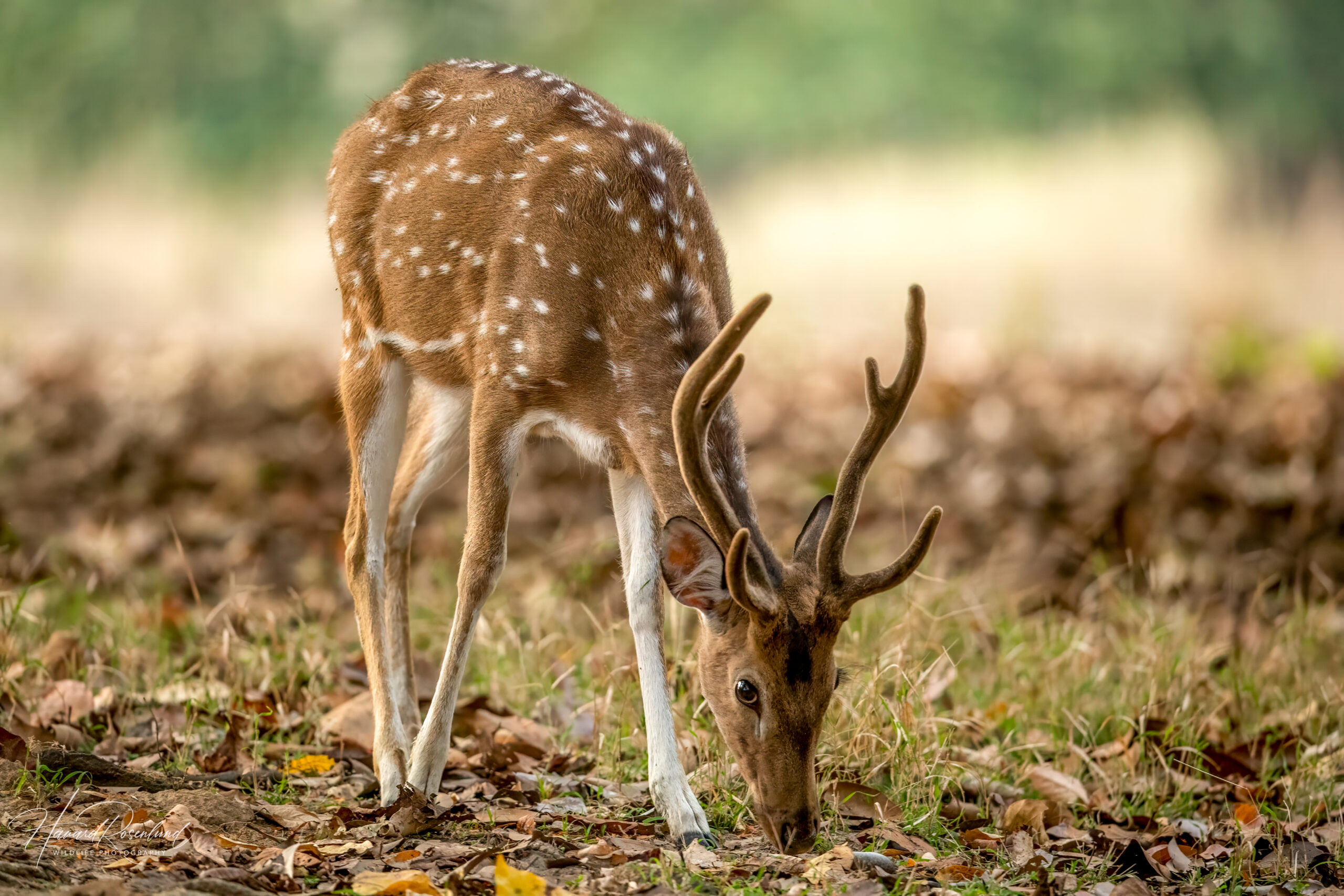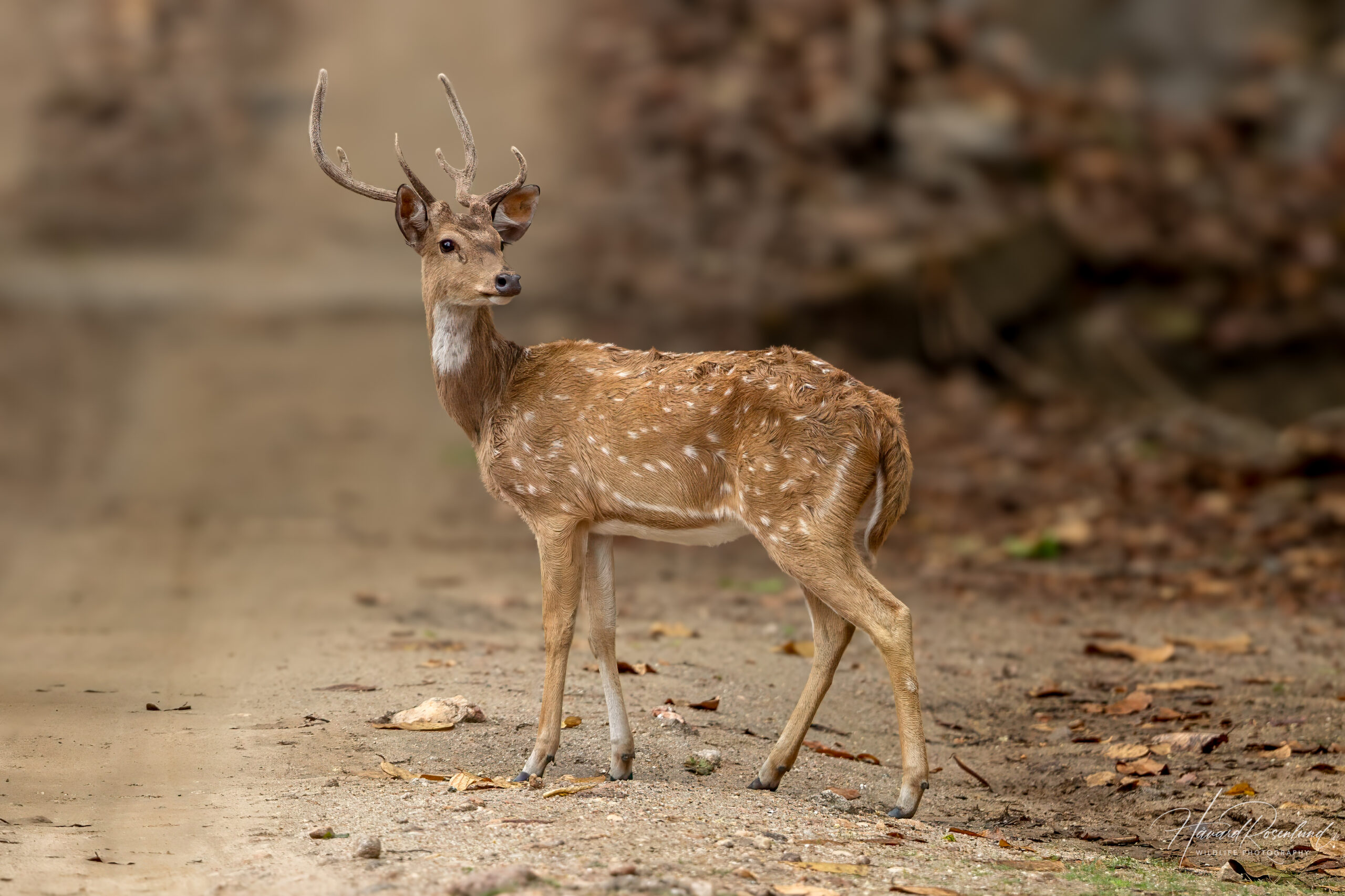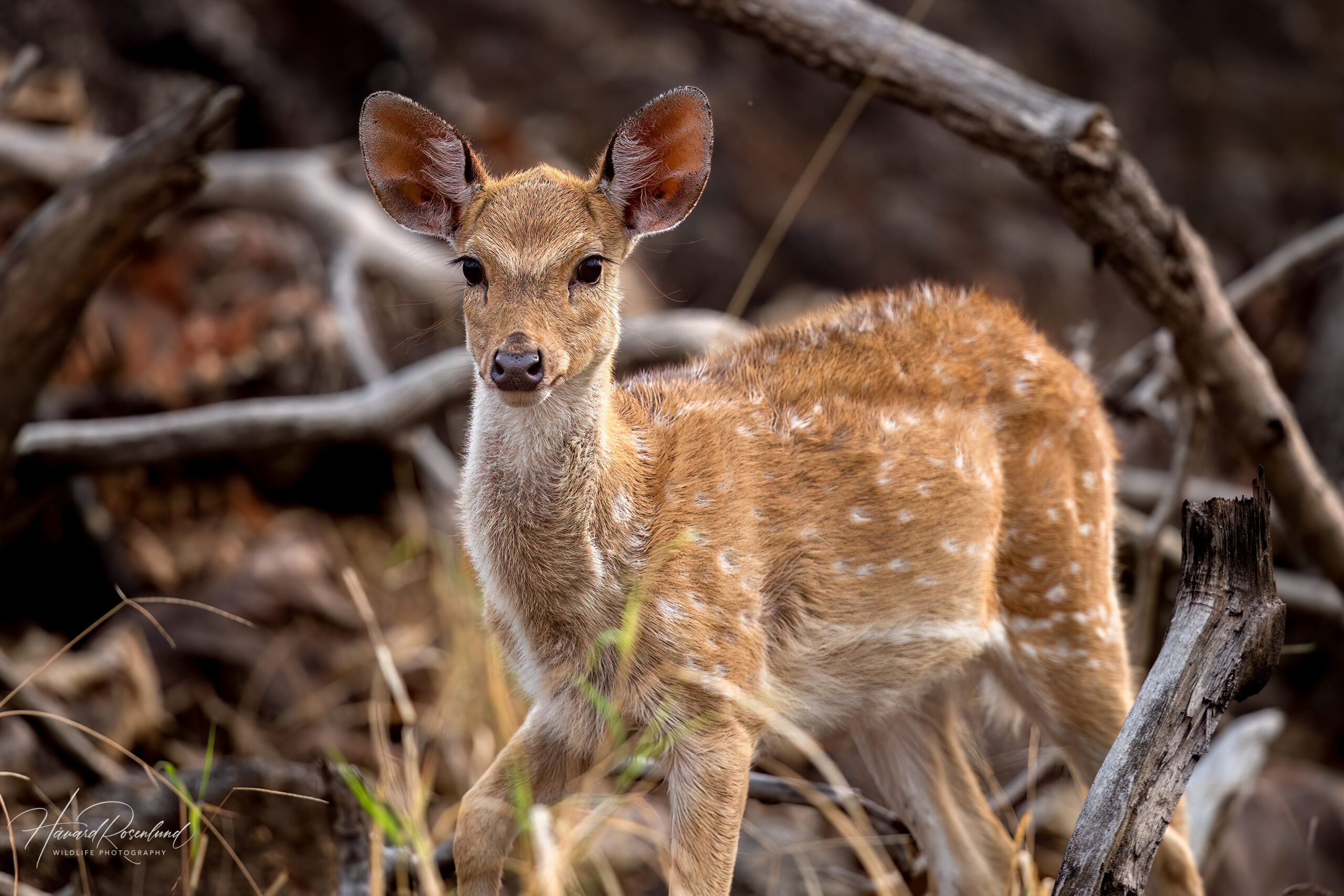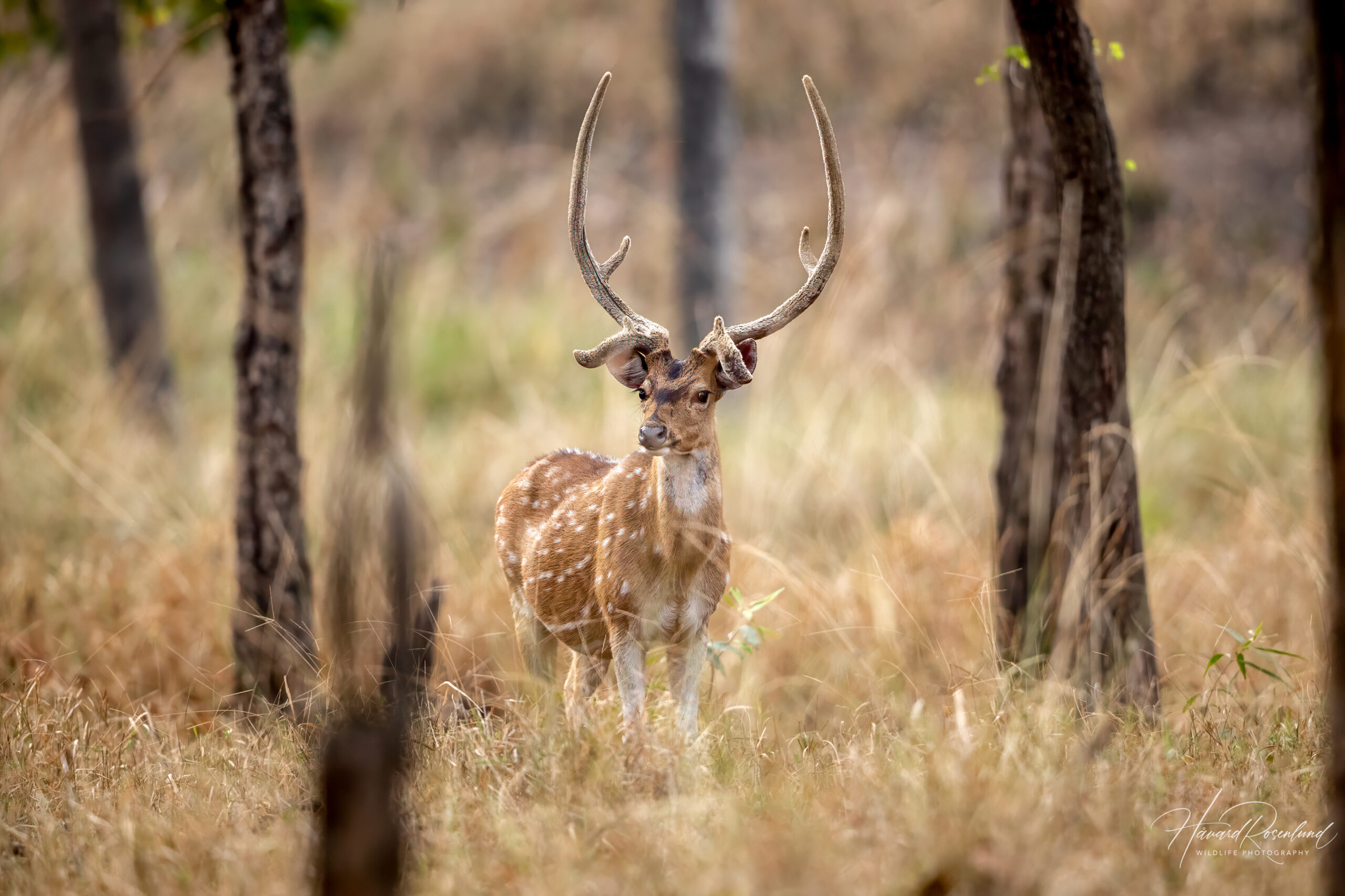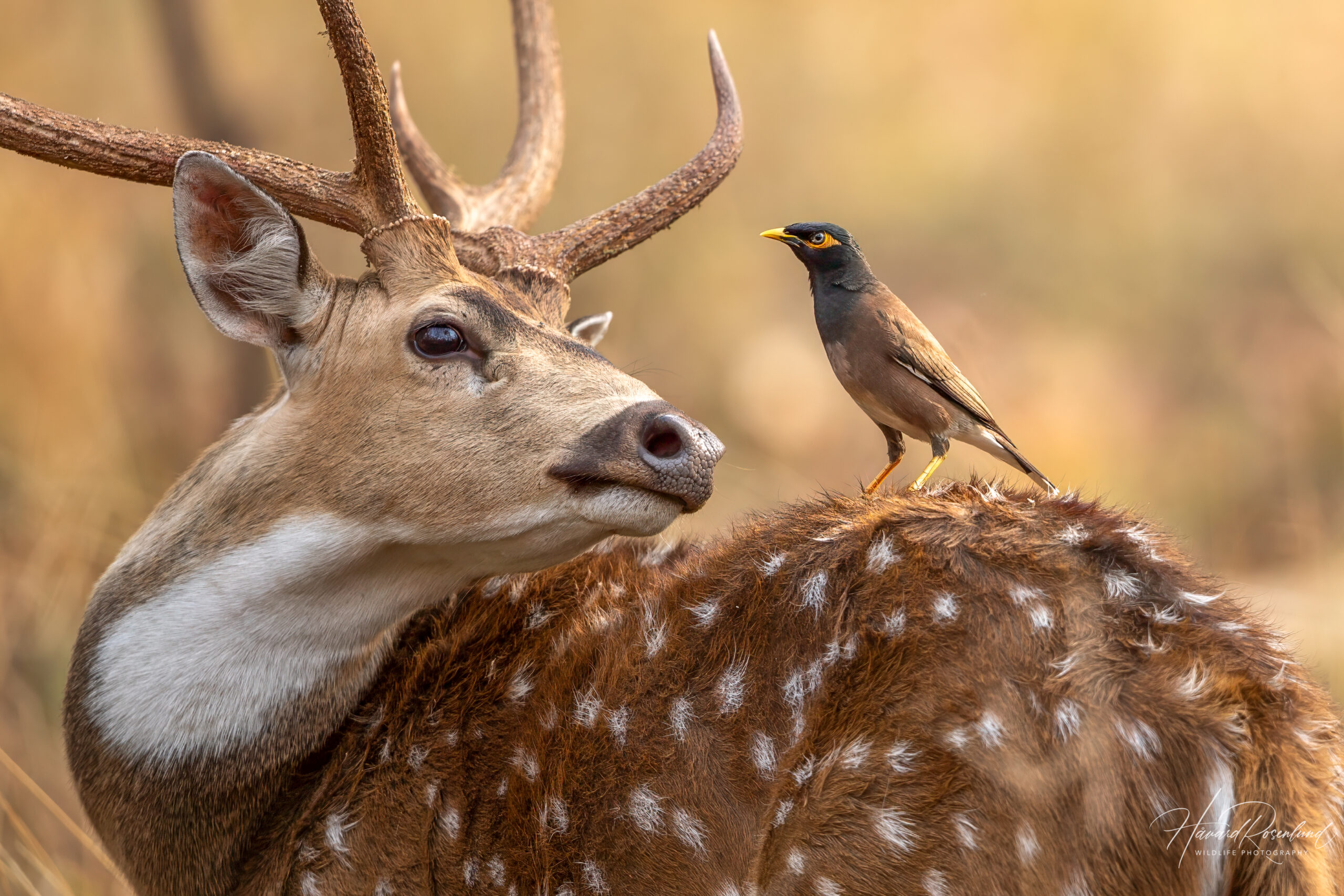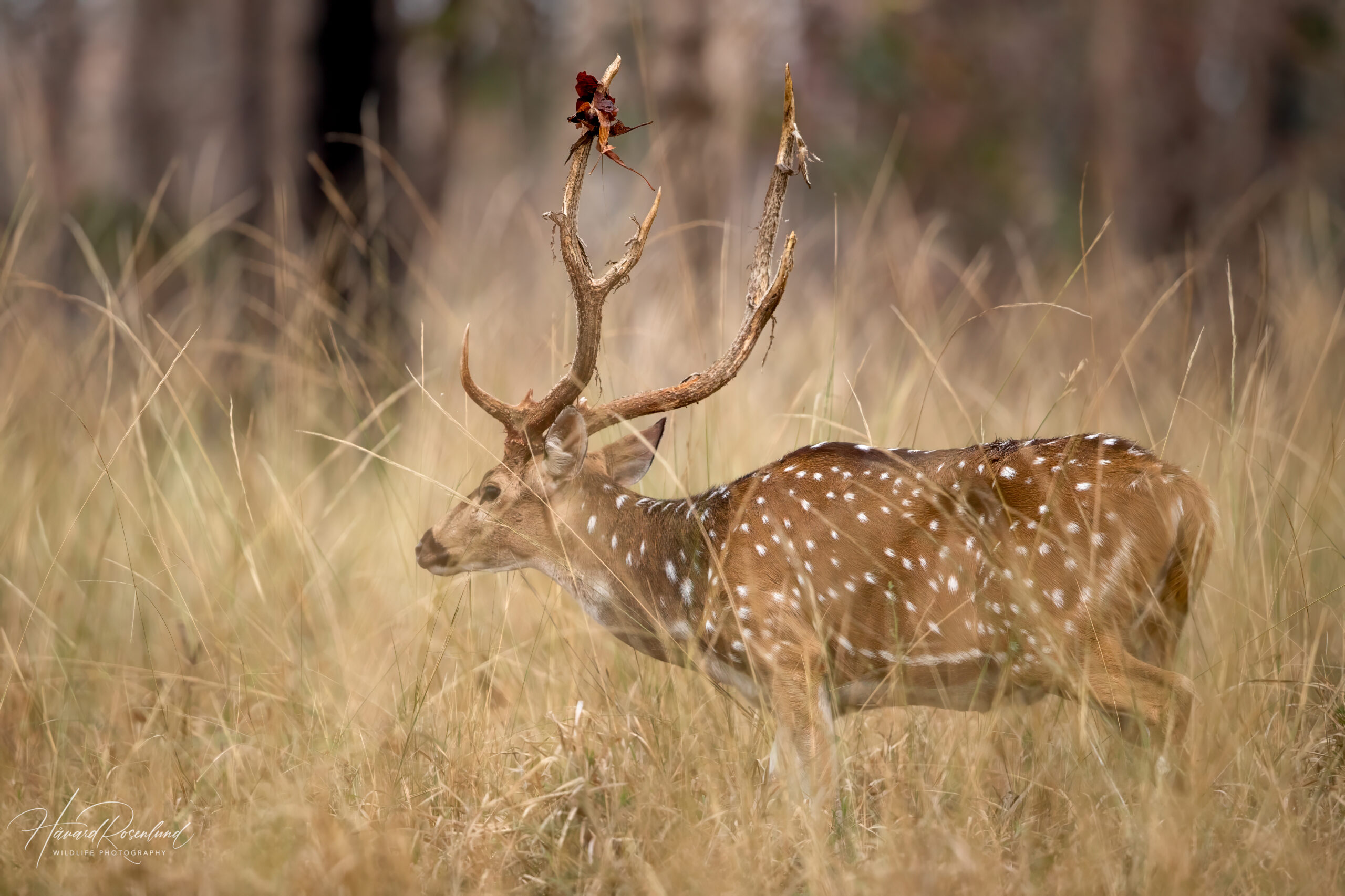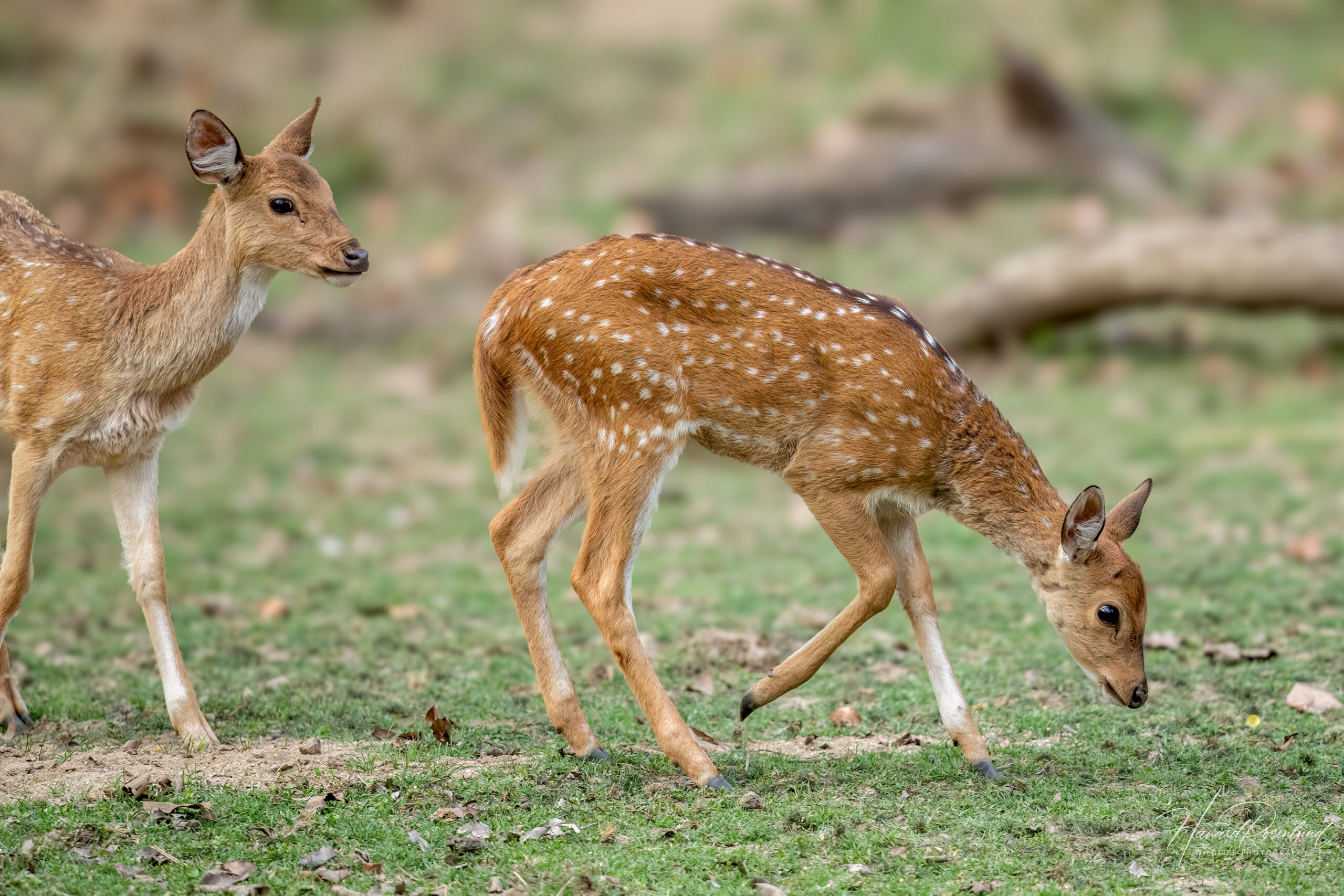Description
The chital (Axis axis), also known as spotted deer and axis deer, is a medium-sized deer native to the Indian subcontinent. It has a distinct rufous to golden-brown coat dotted with white spots. Adult males sport impressive antlers that branch into three tines. These antlers are shed annually, and a new set grows in their place, often larger than the previous set. Chitals typically stand about 90 cm (ca. 3 feet) tall at the shoulder and weigh between 50 to 85 kg (110 to 187 lbs), with males being larger than females. Their unique spotted coat set them apart from most other deer species, which rarely retain their spots into adulthood.
Diet & habitat
Chitals are predominantly grazers, and thus prefer grass; however, they also browse on leaves, fruits, and branches of shrubs and trees, especially during the dry season when grass is scarce. They primarily inhabit dense deciduous forests, open grasslands, and areas near water bodies. The species exhibits a remarkable ability to adapt to various habitats but thrives best in regions that offer both water sources and cover.
Behavior
Chital deer are diurnal, with peak activity periods at dawn and dusk. They are highly social animals, forming groups of up to 100 individuals, although smaller groups of 10-20 are more common. These groups usually consist of females and their young, with males either forming bachelor groups or leading a harem of females. Chitals are known for their agility and alertness. They communicate through vocal signals, body language, and scent marking to maintain group cohesion and warn of predators, which include tigers, leopards, and dholes.
Reproduction
Unlike many other deer species, chitals do not have a rutting season, and males can be seen displaying and competing for females throughout the year. However, breeding is somewhat dependent on climate and it typically peaks in the cooler months. After a gestation period of about 210-235 days, a female gives birth to one or two fawns. The mother hides her newborns in dense vegetation for the first few weeks, visiting only to nurse. Fawns are weaned at six months but may stay with their mother until the birth of the next offspring. Chitals have a life expectancy of about 20-30 years in the wild.
Status
The IUCN Red List currently classifies the chital as least concern, indicating a stable population across its native range. Despite facing threats from habitat loss, poaching, and predation, chitals benefit from their ability to adapt to a variety of habitats and their presence in several protected areas. However, localized declines due to deforestation and human encroachment highlight the need for ongoing conservation efforts.




